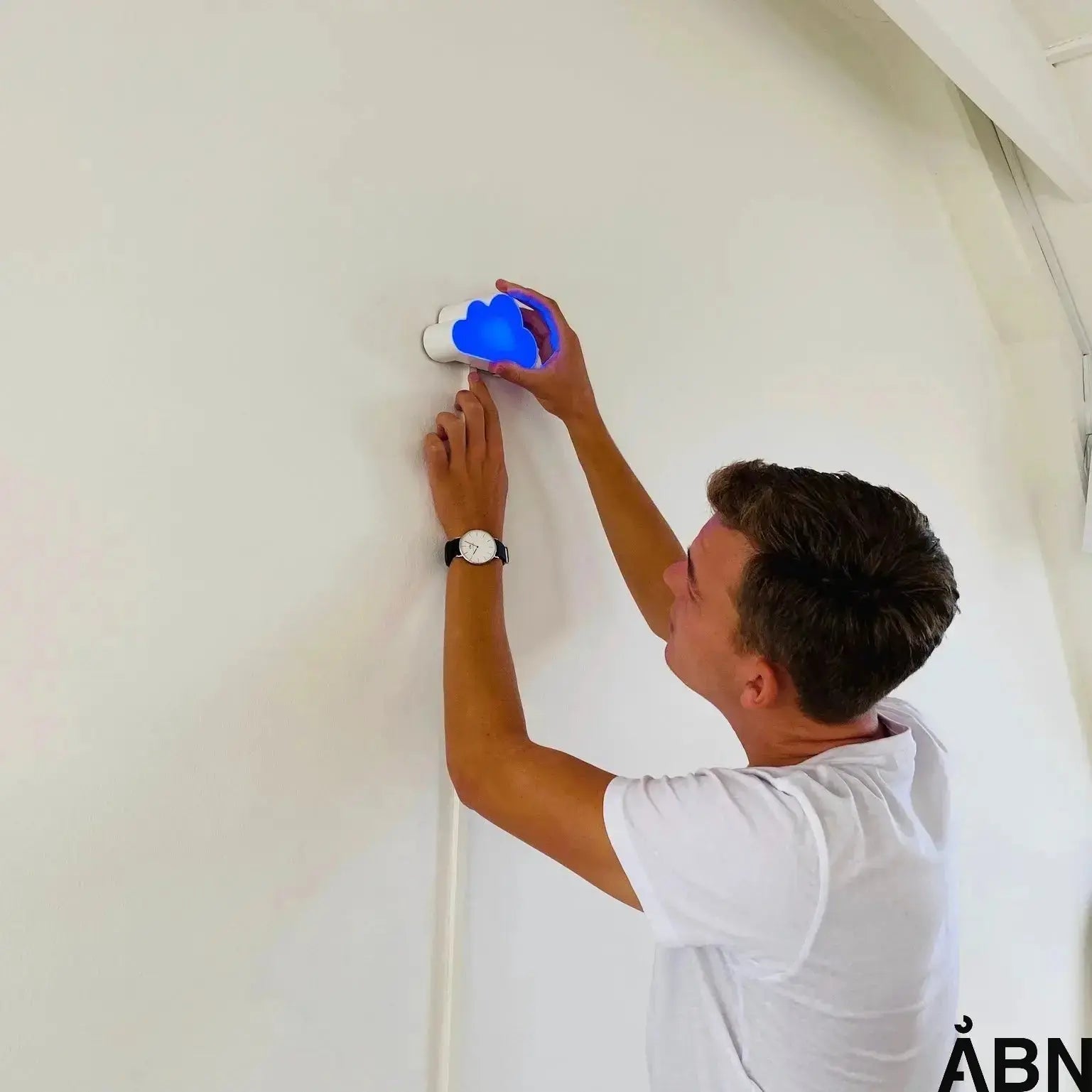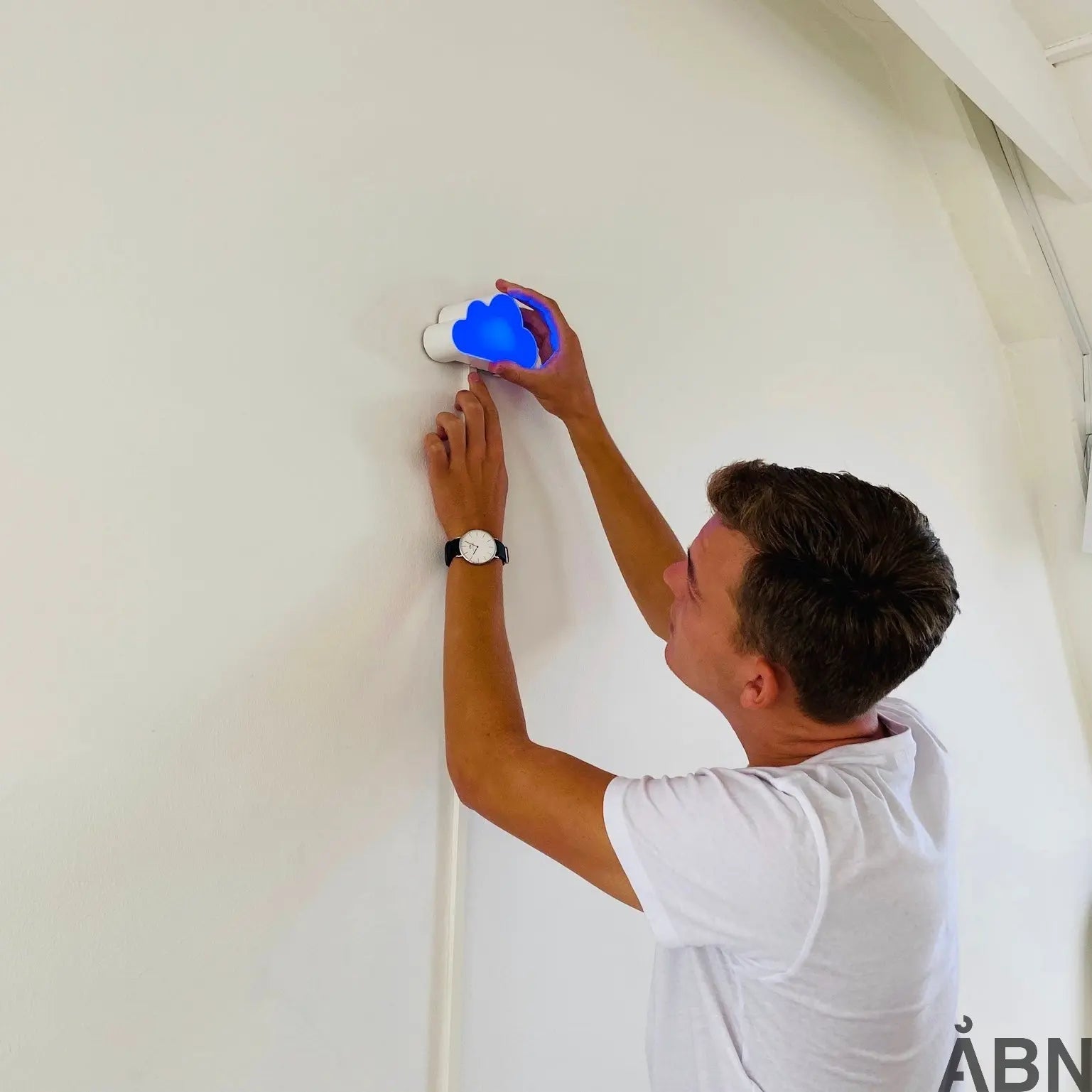Video guide
Setup guide
Before you get started
Before you start installing the SKYEN on your wall, it is important that you have read this guide. If the device is placed incorrectly, it is difficult and sometimes impossible to remove it from the wall again as the tape is very strong. We advise you to contact us if you are in doubt about the setup as it can lead to poor or misleading measurements.
You can always opt for professional setup at ÅBN. Purchase it here.
Package contents
When you receive the SKY, everything you need to get started is included.
You will find:
-
THE CLOUD
-
Power supply
Yes, that's all you need to get started measuring your indoor climate.
Best location of the SKY
To ensure accurate indoor climate measurements, it is important to position the SKY correctly. Follow these guidelines for optimal installation:
The CLOUD should be placed:
-
On a wall or high shelf - Make sure the CLOUD is well and securely positioned.
-
In the living area – approximately 1.5-2 meters above the floor where people are.
-
Away from direct heat sources – such as radiators, heaters and electrical devices that can emit heat.
-
In an open location – so that air can circulate freely around the unit without obstructions from furniture or walls.
-
Consider that the SKY should be as representative of the room as possible. Therefore, place it in the middle between sources of pollution and the possibility of fresh air supply. We recommend, among other things, placing the SKY in the middle of a side wall between windows and the back wall.
The SKY must not be placed:
-
In direct sunlight – as it can affect temperature and light measurements.
-
Less than 1 meter from a window that opens to fresh air – as it can give erroneous CO₂ measurements.
-
Directly during a ventilation blow-in – to avoid measurements that only reflect the ventilation air and not the real indoor climate.
-
In corners – as poor air circulation can give misleading values.
-
Close to strong-smelling sources – such as printers, chemical plants or kitchens, which can interfere with air quality measurements.
You are always welcome to reach out to us at hello@aabn.io or via chat if you are in doubt about where you should place the SKYEN indoor climate sensor.
Setup with the included double-sided adhesive tape
Before installing the SKYEN on the wall with the included double-sided adhesive tape, you must be absolutely sure of the location. The tape is very strong and permanent, so the SKYEN is almost impossible to move once the tape has made contact with the wall.
-
Find the right location for the SKY
-
Make sure the power plug can reach a power source at the location.
-
Wipe the surface with alcohol or other degreasing cleaner and wait until the wall is dry again.
-
Place the SKY on the wall so that the bottom is level (use a small spirit level if necessary) and press hard against the entire surface of the SKY for five seconds so that the entire surface of the tape comes into contact with the wall.
-
Check that the SKY is securely attached to the wall.
Setup with screws
For walls with reduced adhesion, we recommend mounting the SKYEN with screws.
-
Print it out, hang it on the wall and drill directly through the paper at the marked points. Remember to hang the paper in batting.











